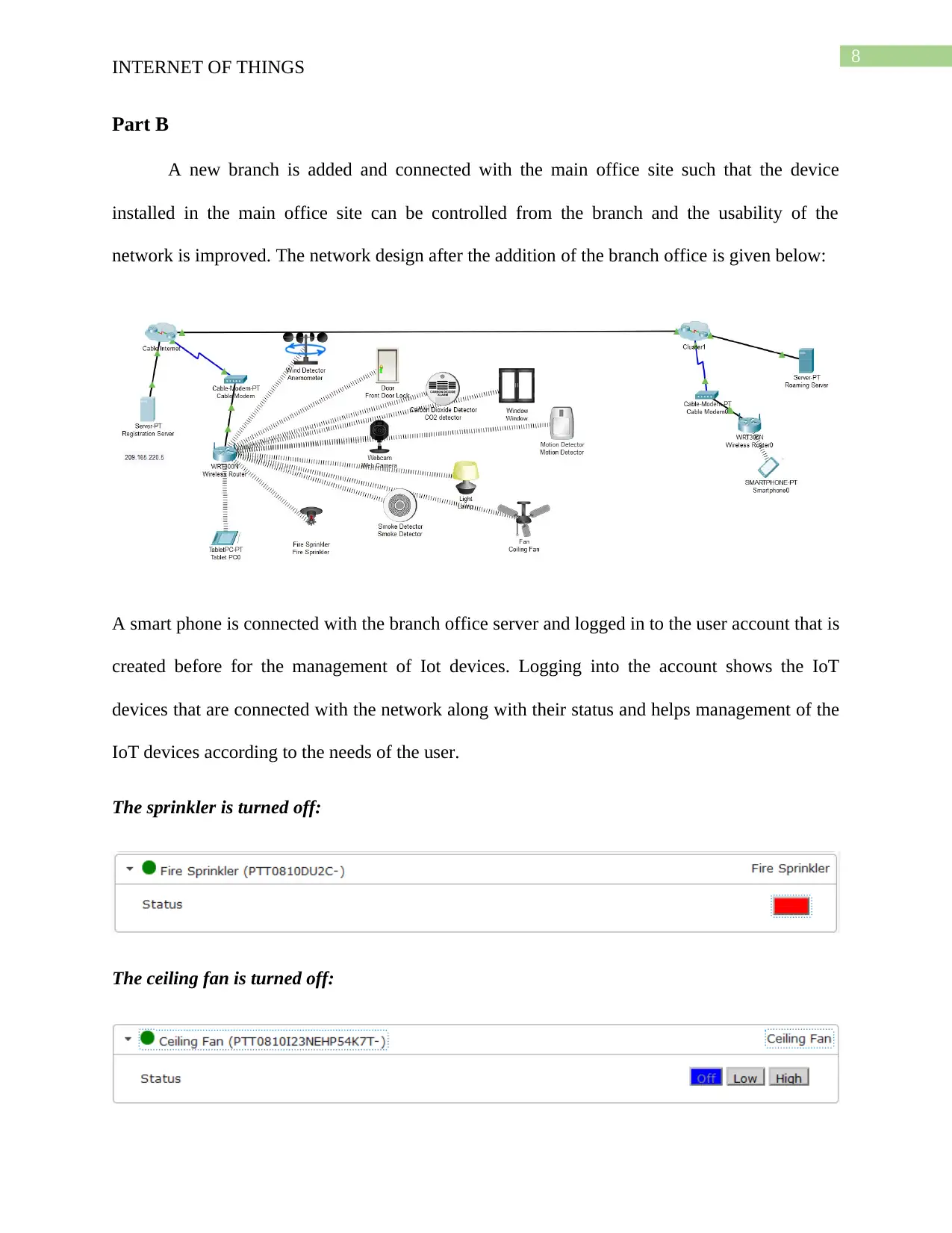Smart Office Network Design, Automation, and Data Collection Project
VerifiedAdded on 2022/08/27
|24
|2420
|19
Project
AI Summary
This project details the design and implementation of a smart office network using Internet of Things (IoT) devices. The project is divided into two main tasks. Task one focuses on the network design, including the configuration of a registration server, wireless access point, and DHCP server to manage and connect various IoT devices. The design includes IP addressing schemes and demonstrates the connection and control of devices like tablets and sensors. Automation scenarios are also implemented, such as turning on lights and activating sprinklers based on sensor input. Task two involves creating a Python script to collect real-world data from IoT sensors, specifically temperature and humidity data from the Bureau of Meteorology website. The script processes this data and presents it through a web interface, demonstrating data retrieval, processing, and presentation using Python, Apache web server, and CGI. The project showcases the practical application of IoT in smart office environments, covering network setup, automation, and data-driven insights.
1 out of 24

















![[object Object]](/_next/static/media/star-bottom.7253800d.svg)